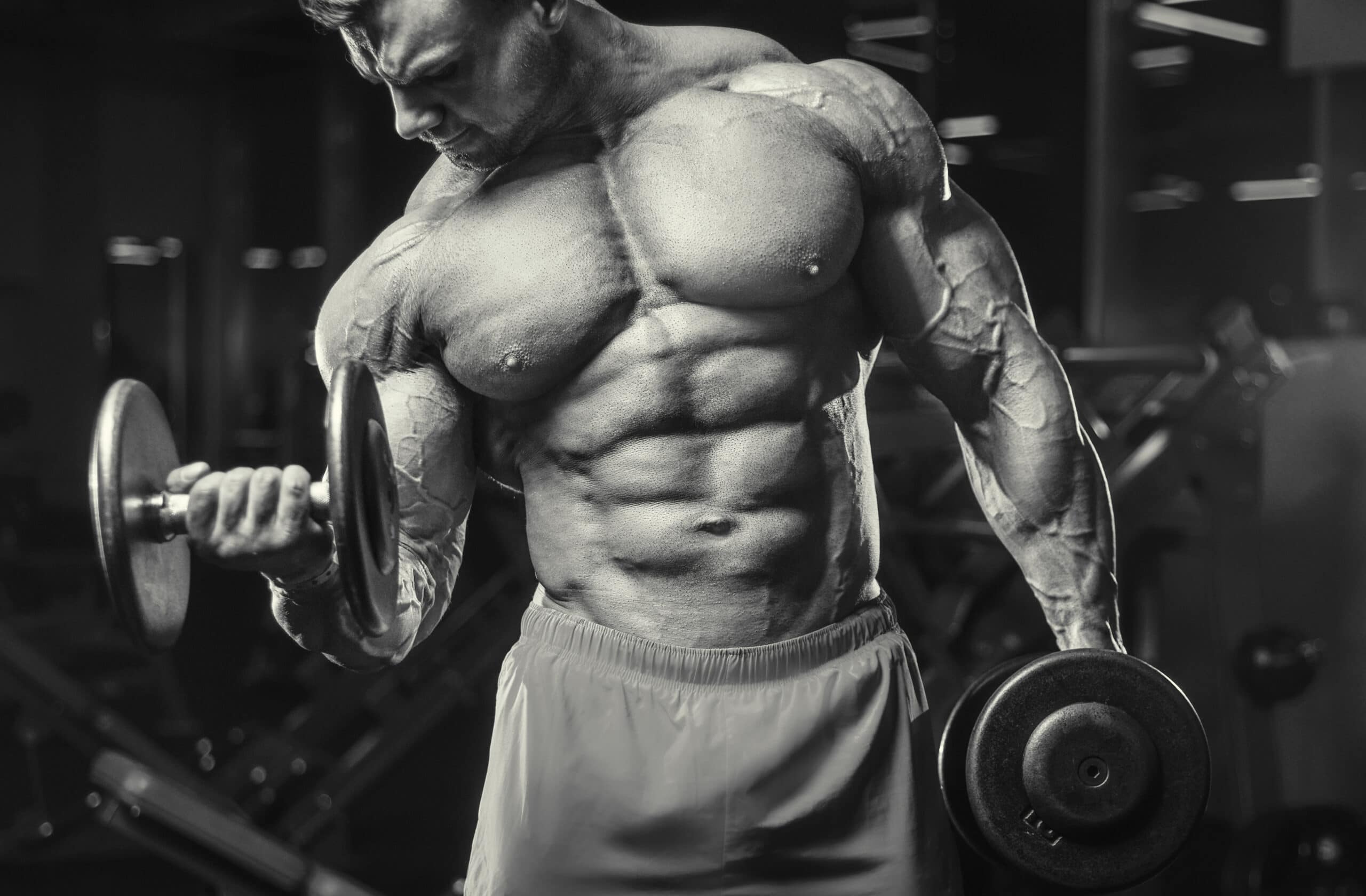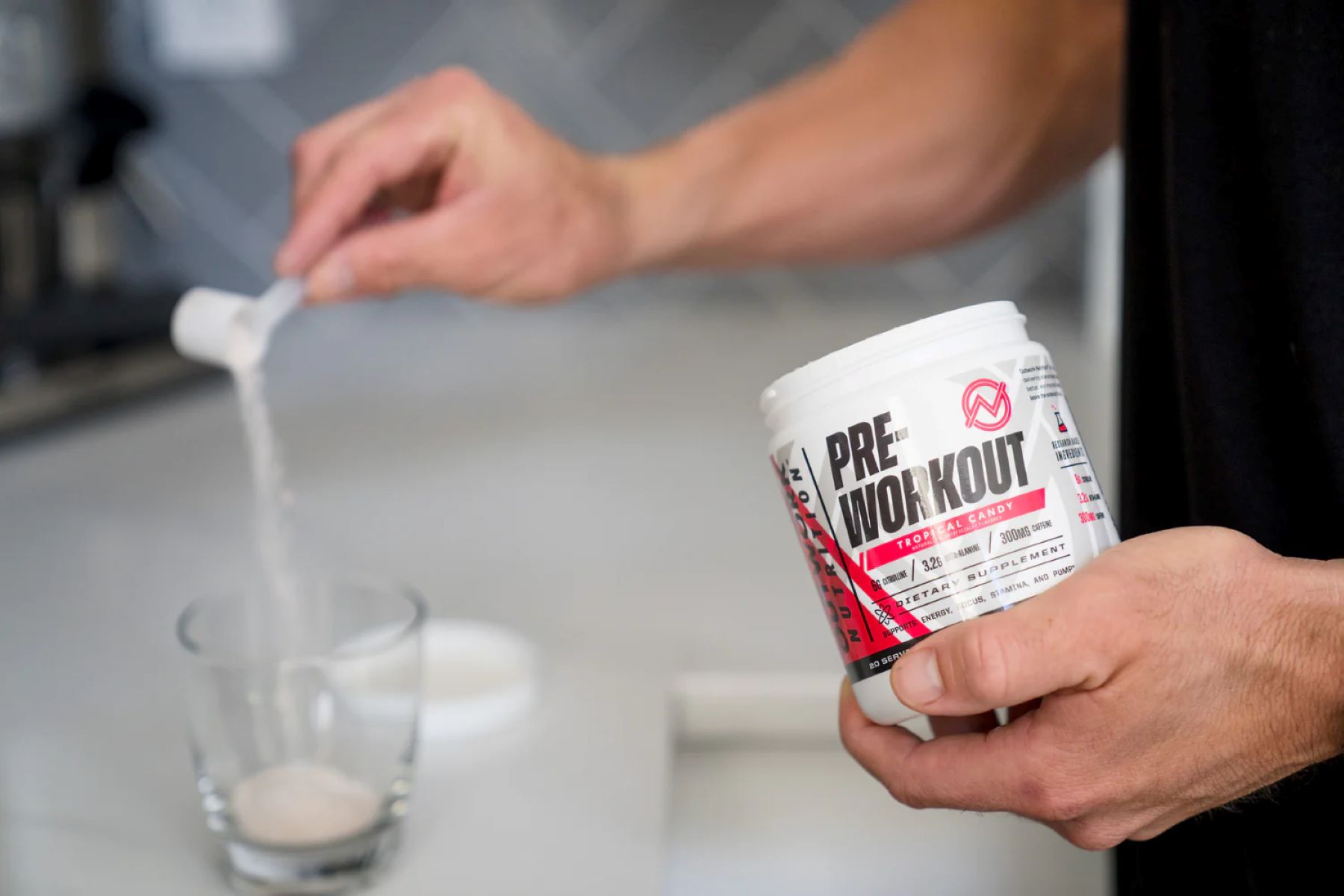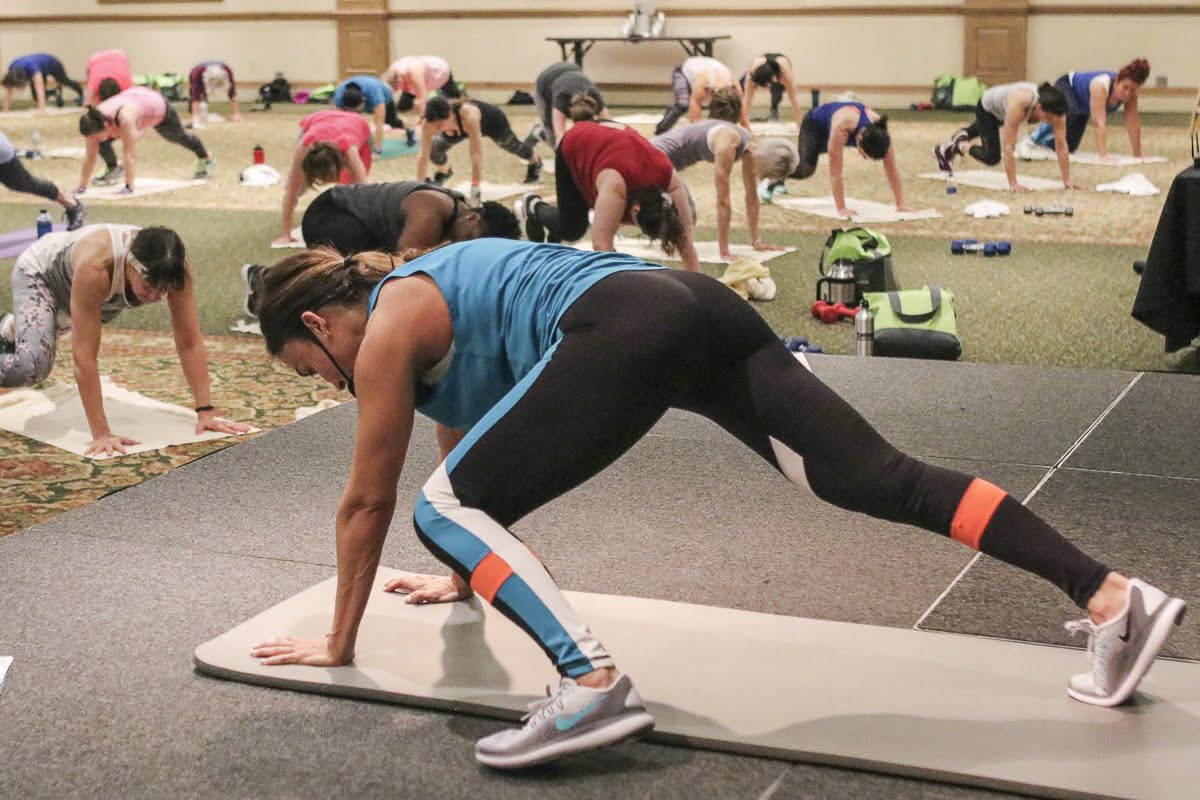

Featured
What Does Pump Do For Workout
Modified: August 21, 2023
Discover the power of featured pump, designed to enhance your workout and maximize your performance. Unleash your full potential with this must-have fitness accessory.
Introduction
The “pump” is a term commonly used in the world of fitness and bodybuilding to describe the sensation of increased blood flow and muscular fullness during a workout. It is often associated with a temporary increase in muscle size and definition, giving individuals a satisfying feeling of accomplishment and motivation. While the pump may seem like a purely aesthetic phenomenon, it actually plays a crucial role in achieving optimal results from your workouts.
When you engage in intense physical activity, such as weightlifting or high-intensity interval training, blood rushes to the working muscles to provide them with oxygen and nutrients. This increased blood flow causes the muscles to swell, resulting in that firm and pumped-up appearance. But the pump goes beyond just superficial benefits; it has a profound impact on multiple aspects of your workout performance and overall muscle development.
In this article, we will dive deeper into the concept of the pump and explore its importance in workouts. We will discuss how the pump contributes to increased muscle size and definition, enhanced muscle endurance, improved nutrient delivery, and increased motivation and focus during training. Additionally, we will explore the factors that can affect the intensity of the pump and provide you with proper techniques to achieve and maximize this sensation. So, let’s get started and uncover the mysteries behind the pump!
Understanding the Concept of Pump
Before we delve into the importance of pump in workouts, let’s first take a closer look at what the pump actually is. The pump, also known as “muscular pump” or “muscle pump,” refers to the increased blood flow and swelling of muscles during exercise.
When you engage in resistance training or any form of high-intensity exercise, your muscles contract and create tension. As a response to this increased demand for energy, your body increases blood circulation to the working muscles. This surge of blood flow brings vital nutrients, oxygen, and hormones to the muscles, promoting optimal function and growth.
As the blood rushes into the muscles, the blood vessels expand, and the muscles themselves swell. This creates a temporary increase in muscle size, giving you that pumped-up feeling and a more pronounced appearance. It’s like the muscles are filled to their maximum capacity, creating a tight and full sensation.
But the pump is not solely a cosmetic phenomenon. The increased blood flow and nutrient delivery during the pump serve important physiological functions. The muscles receive a fresh supply of oxygen, allowing them to sustain the energy needed for intense exercise. The influx of nutrients, such as amino acids and glucose, aids in muscle repair, growth, and recovery.
Another crucial aspect of the pump is the increased lactate clearance. Lactate, a byproduct of anaerobic metabolism, can build up in the muscles during intense exercise, leading to fatigue. The pump helps remove accumulated lactate, allowing you to maintain a higher level of endurance and prolonged exercise performance.
Furthermore, the pump stimulates the release of hormones such as growth hormone and insulin-like growth factor-1 (IGF-1), which play vital roles in muscle growth and repair. These hormones are instrumental in triggering the processes of protein synthesis and muscle hypertrophy, aiding in the development of lean muscle mass.
By understanding the concept of the pump, you can begin to appreciate its significance in enhancing your workout performance and achieving your fitness goals. It’s not just about looking good; it’s about optimizing your body’s physiological response to exercise. Now that we have a basic understanding of the pump, let’s explore its importance in functional terms.
Importance of Pump in Workouts
The pump is not just a visual result of a good workout; it holds significant importance in maximizing your training efforts and achieving your fitness goals. Here are some key reasons why the pump is crucial in workouts.
1. Increased Muscle Size and Definition: Achieving a pump leads to temporary muscle hypertrophy, where the muscles appear fuller and more defined. This enhanced muscular appearance can provide a sense of accomplishment and motivation, driving you to push yourself harder in future workouts.
2. Enhanced Muscle Endurance: The pump contributes to improved muscle endurance by increasing blood flow and oxygen supply to the working muscles. This allows you to sustain high-intensity exercises for longer durations, leading to more productive workouts and potentially greater gains in strength and overall performance.
3. Improved Nutrient Delivery: The increased blood flow during the pump brings crucial nutrients and oxygen to the muscles in a more efficient manner. This helps support muscle growth, repair damaged tissues, and replenish glycogen stores after intense exercise. Proper nutrient delivery plays a vital role in optimizing recovery and promoting muscle growth.
4. Increased Motivation and Focus: Feeling the pump can provide a psychological boost during workouts. The physical sensation of tight, pumped muscles can increase your confidence and motivation, pushing you to train harder and achieve better results. It can also improve your focus and concentration, allowing you to fully engage in your workout and maximize your performance.
5. Lactic Acid Clearance: The pump aids in the removal of lactic acid, a byproduct of anaerobic metabolism that can lead to muscular fatigue. By clearing out accumulated lactic acid, the pump helps delay the onset of fatigue, allowing you to perform more repetitions and extend your training sessions, ultimately leading to greater gains in strength and endurance.
The pump serves as a measurable indicator of the intensity and effectiveness of your workouts. By actively pursuing and experiencing the pump, you can ensure that you are pushing your muscles to their limits and creating optimal conditions for growth and development.
Understanding the importance of the pump in workouts can motivate you to chase that sensation and incorporate strategies to maximize its benefits, leading to more efficient and rewarding training sessions.
Increased Muscle Size and Definition
One of the most noticeable effects of the pump is the temporary increase in muscle size and definition. When you experience a pump during your workout, your muscles become engorged with blood, causing them to appear fuller and more pronounced. This enhanced muscular appearance contributes to a sense of satisfaction and can serve as a visual indicator of your progress and hard work.
The pump occurs when blood vessels within the muscle tissue dilate, allowing more blood to flow into the muscles. This increased blood flow brings with it essential nutrients, oxygen, and hormones that are vital for muscle growth and repair. The influx of nutrients supports protein synthesis, a process in which new muscle fibers are built, leading to increased muscle size over time.
Furthermore, the pump also plays a role in enhancing muscle definition. When the muscles are pumped and filled with blood, the intramuscular pressure increases, causing the muscle fibers to expand and become more visible. This can create a more chiseled and sculpted appearance, highlighting the muscle contours and separating them from surrounding tissues.
While the pump itself is temporary and the muscles will eventually return to their pre-pump state, consistently experiencing the pump during workouts can contribute to long-term muscle growth and improved muscle definition. By regularly achieving the pump, you are stimulating the muscles to adapt and become stronger, ultimately leading to increased muscle size and improved overall physique.
It is important to note that the pump is not the sole factor responsible for muscle growth and definition. It is just one piece of the puzzle. To maximize your results, you need to combine the pump with proper nutrition, adequate rest, and a well-structured workout routine that targets all major muscle groups.
Remember, consistency is key. By consistently incorporating exercises that promote the pump and challenge your muscles, you can gradually increase muscle size and definition over time. It’s important to push yourself and continually strive for progress, aiming to reach new levels of muscular fullness and definition with each workout.
Incorporating techniques to achieve and enhance the pump, such as incorporating supersets, drop sets, and high-repetition sets, can help intensify the blood flow to the muscles, leading to a more pronounced and satisfying pump. By focusing on the pump and incorporating these techniques into your workout routine, you can stimulate growth, increase muscle size, and achieve the desired level of muscle definition.
Enhanced Muscle Endurance
Aside from the aesthetic benefits of the pump, it also plays a critical role in enhancing muscle endurance during workouts. When you experience a pump, it signifies increased blood flow to the working muscles, providing them with the necessary oxygen and nutrients for optimal performance.
During intense exercise, the demand for energy production in the muscles increases. This leads to the production of lactic acid as a byproduct of anaerobic metabolism. Accumulation of lactic acid can cause muscle fatigue, limiting your ability to perform at high levels for an extended period.
The pump plays a pivotal role in aiding the clearance of lactic acid from the muscles. The increased blood flow and oxygen supply during the pump facilitate the removal of lactic acid, helping to delay the onset of fatigue and prolonging your endurance.
Additionally, the pump also delivers vital nutrients, such as glucose and amino acids, to the working muscles. These nutrients contribute to the replenishment of glycogen stores and help repair any micro-damage that occurs during exercise. By addressing these factors, the pump helps improve muscle recovery and endurance capacity.
Experiencing a pump during your workouts can have a significant impact on your ability to withstand prolonged periods of intense exercise. It allows you to push through fatigue, maintain a higher level of performance, and complete more repetitions or sets before fatigue sets in.
To enhance muscle endurance through the pump, you can incorporate specific training techniques. For example, incorporating high-repetition sets or incorporating supersets and drop sets can increase the blood flow to the muscles, intensifying the pump and challenging your endurance capacity.
It’s important to note that building muscle endurance is not solely dependent on the pump. You should also focus on other aspects of your training, such as incorporating cardiovascular exercises and implementing progressive overload techniques. Combining these strategies with the pump can synergistically enhance your overall endurance and contribute to improved athletic performance.
By actively pursuing the pump and incorporating techniques to enhance muscle endurance, you can improve your ability to perform high-intensity exercises for longer durations. This can ultimately lead to greater gains in strength, muscular endurance, and overall athletic performance.
Improved Nutrient Delivery
One of the significant benefits of experiencing the pump during workouts is the improved delivery of nutrients to the working muscles. The pump stimulates increased blood flow to the muscles, ensuring a more efficient transport of essential nutrients, oxygen, and hormones.
During exercise, the demand for nutrients and oxygen in the muscles increases significantly. The pump helps meet this demand by expanding the blood vessels and increasing blood flow to the working muscles. This rush of blood brings with it vital nutrients, such as amino acids and glucose, which are crucial for muscle growth, repair, and recovery.
The influx of nutrients provided by the pump plays a pivotal role in several essential processes within the muscle tissue. Firstly, it supplies the necessary building blocks for protein synthesis—the process through which new muscle proteins are created, leading to muscle growth and hypertrophy over time.
Additionally, the enhanced nutrient delivery from the pump supports glycogen replenishment. Glycogen is the primary fuel source for intense physical activities. By replenishing glycogen stores in the muscle, the pump provides muscles with an immediate energy source, enabling you to perform at higher intensities and for longer durations.
Besides providing energy and supporting muscle growth, the increased nutrient delivery during the pump aids in muscle repair and recovery. Exercise can cause micro-damage to the muscle fibers, and proper nutrition is crucial for repairing and rebuilding these fibers to make them stronger and more resilient. The pump ensures that the necessary nutrients are readily available to promote optimal recovery.
In addition to nutrients, the pump also facilitates the delivery of oxygen to the working muscles. Oxygen is vital for energy production and the proper functioning of the muscles. By increasing blood flow and oxygen supply, the pump helps oxygenate the muscles, allowing them to work at their best capacity during exercise.
To maximize the benefits of improved nutrient delivery through the pump, it is important to ensure proper nutrition before and after your workouts. Pre-workout nutrition should focus on providing the necessary fuel and amino acids to support energy production and muscle protein synthesis. Post-workout nutrition should aim to replenish glycogen stores and provide the essential nutrients for muscle repair and recovery.
By actively pursuing the pump during your workouts, you enhance the nutrient delivery to your muscles. This results in improved muscle growth, enhanced recovery, and overall better workout performance.
Increased Motivation and Focus
Experiencing the pump during your workouts can have a significant impact on your motivation and focus. The physical sensation of tight, pumped muscles can provide a psychological boost and increase your overall drive to push yourself harder and achieve better results.
When you achieve a pump, it serves as a visible representation of the effort you’re putting into your workout. Seeing and feeling your muscles become fuller and more defined can create a sense of accomplishment and satisfaction. This feeling of achievement can fuel your motivation to continue pushing yourself and striving for progress.
In addition to the sense of accomplishment, the pump also helps improve focus and concentration during workouts. When you’re fully engaged in feeling the pump, you are more attuned to your body and its responses. This heightened awareness allows you to better connect with your muscles and focus on the specific muscle groups you’re targeting, leading to more efficient and effective exercise performance.
The pump can also boost your confidence in your abilities. Seeing your muscles fill out and feeling the tightness can increase your belief in your strength and physical capabilities. This confidence can translate into improved exercise execution and the willingness to push beyond your perceived limits.
Furthermore, the increased blood flow and oxygen supply to the brain during the pump can enhance cognitive function and mental clarity. This can sharpen your focus and improve your mental stamina during your workouts. When your mind is clear and focused, you are better able to concentrate on the task at hand, execute proper form, and maximize the benefits of each exercise.
By actively seeking the pump and incorporating techniques to enhance its intensity, you can tap into the motivational and focusing benefits it provides. Techniques such as higher repetition sets, drop sets, and supersets can help intensify the pump and amplify its effects on motivation and focus.
It’s important to note that the pump alone is not the sole source of motivation and focus in your workouts. It should be viewed as a tool to supplement and enhance your mental state during exercise. Pairing the pump with other motivational strategies, such as setting goals, listening to energizing music, or working out with a partner, can create a synergistic effect that elevates your overall workout experience.
Ultimately, the increased motivation and focus that come with experiencing the pump can help you push past your limits, overcome obstacles, and achieve your fitness goals. Embrace the pump as a powerful ally in your fitness journey and use it to drive your progress and success.
Factors Affecting the Pump
While the pump is a desirable sensation during workouts, it is important to understand that not all workouts or individuals will experience the same level of pump. Several factors can influence the intensity and duration of the pump. By being aware of these factors, you can make adjustments to your training regimen to optimize the pump.
1. Exercise Selection: The choice of exercises can significantly impact the pump. Movements that engage multiple muscle groups and involve a full range of motion are generally more effective in eliciting a pump. Compound exercises such as squats, deadlifts, bench press, and pull-ups are known for their ability to generate a substantial pump due to their multi-joint nature.
2. Volume and Intensity: The volume and intensity of your workouts can influence the pump. Higher volume and intensity, which involve more sets and heavier weights, can increase blood flow to the muscles and result in a more pronounced pump. However, it is essential to balance intensity with proper form and technique to avoid injury.
3. Rest Periods: The length of rest periods between sets can impact the pump. Shorter rest periods, typically 30 to 90 seconds, keep the blood flowing and maintain a higher level of pump throughout the workout. Longer rest periods allow for more recovery but may lead to a decrease in the pump sensation.
4. Hydration and Nutrition: Proper hydration and nutrition play a significant role in achieving and maintaining the pump. Dehydration can reduce blood volume, limiting the pump effect. Staying adequately hydrated and consuming a balanced diet with sufficient carbohydrates and protein can support muscle function and promote a more substantial pump.
5. Mind-Muscle Connection: The ability to establish a strong mind-muscle connection can enhance the pump. Focusing on the contraction of the working muscles and maintaining proper form throughout the exercise can help maximize blood flow to those specific muscle groups, intensifying the pump sensation.
6. Genetics and Individual Variations: It’s important to recognize that genetics and individual variations can affect the pump. Some individuals naturally have a greater propensity for achieving a pump, while others may find it more challenging. However, by employing proper techniques and training strategies, individuals can still optimize their pump potential regardless of genetic predisposition.
By taking into account these factors, you can manipulate your training variables and techniques to promote a more intense and prolonged pump during your workouts. Experimenting with different exercises, adjusting intensity levels, optimizing rest periods, and maintaining proper hydration and nutrition can help you achieve a more satisfying and effective pump.
Remember that while the pump can be an indicator of an effective workout, it should not be the sole focus of your training. Prioritize proper form, progressive overload, and overall exercise performance to maximize your overall fitness progress.
Proper Techniques to Achieve and Maximize the Pump
If you want to amplify the pump and maximize its benefits, there are several techniques you can incorporate into your workouts. These techniques focus on increasing blood flow and stimulating muscle engagement to enhance the pump sensation. Here are some proper techniques to achieve and maximize the pump:
1. Higher Repetition Sets: Performing higher repetition sets with a moderate weight can help elicit a stronger pump. Aim for a rep range of around 8-15 reps per set. This higher volume of repetitions increases time under tension and promotes greater blood flow to the working muscles.
2. Supersets: Employing superset training involves performing two exercises back-to-back, typically targeting different muscle groups. This method intensifies the pump by keeping the muscles continuously engaged and increasing the metabolic stress on the body. For example, pairing bicep curls with tricep dips or chest press with bent-over rows can provide an intense pump.
3. Drop Sets: Drop sets involve performing an exercise with a specific weight until muscle failure, then immediately reducing the weight and continuing the set. This technique challenges the muscles with progressively lighter weights, increasing intensity, and promoting a greater pump.
4. Tempo Training: Slowing down the tempo of your repetitions can enhance the pump. Focus on the eccentric (lowering) phase of the movement, taking more time to control the weight. This controlled tempo increases time under tension, sending more blood to the muscles and promoting a more intense pump.
5. Circuit Training: Incorporating a circuit-style workout can help sustain the pump throughout the session. Move from one exercise to another without significant rest between sets to maintain continuous blood flow and muscle engagement. This approach increases muscle fatigue and stimulates a consistent pump throughout the entire workout.
6. Proper Breathing Techniques: Ensuring proper breathing during exercise can optimize the pump. Exhale during the concentric (lifting) phase and inhale during the eccentric (lowering) phase. This controlled breathing pattern helps maintain oxygen supply to the muscles, enhancing the pump and overall performance.
7. Mind-Muscle Connection: Establishing a strong mind-muscle connection is essential for maximizing the pump. Focus on engaging the target muscles throughout each repetition, emphasizing the squeeze and contraction. This mental connection enhances muscle recruitment and promotes a more significant pump sensation.
Remember, safety and proper form should always be a priority when implementing these techniques. Gradually incorporate these methods into your workouts and adjust accordingly to prevent injury and maximize effectiveness. Additionally, it’s important to listen to your body’s limitations and not push beyond what feels comfortable or causes pain.
By incorporating these proper techniques, you can enhance the pump and maximize its benefits. Remember, the pump itself is not the ultimate goal, but rather an indicator that you’re effectively engaging your muscles and optimizing blood flow. Combined with a well-rounded workout routine and proper nutrition, the pump can contribute to improved muscle growth, endurance, and overall fitness progress.
Common Mistakes to Avoid When Chasing the Pump
While chasing the pump can be an effective way to enhance your workouts, there are certain common mistakes that individuals often make. To ensure you’re maximizing the benefits of the pump and avoiding potential pitfalls, here are some common mistakes to avoid:
1. Sacrificing Form for Intensity: One of the biggest mistakes is sacrificing proper form for the sake of intensity. It’s crucial to prioritize form and technique over chasing the pump. Poor form can lead to injury and reduce the effectiveness of the exercise. Always focus on maintaining proper alignment and performing each exercise with control and precision.
2. Neglecting Progressive Overload: The pump alone is not enough to stimulate long-term muscle growth. It’s important to also incorporate progressive overload, gradually increasing the weight, reps, or intensity over time. Neglecting progressive overload can limit your muscle development and hinder overall progress, even if you experience a strong pump during your workouts.
3. Overemphasizing Pump-Specific Exercises: While exercises that specifically target the muscles you want to pump can be effective, don’t solely focus on those movements. It’s essential to incorporate a variety of compound and isolation exercises to target all muscle groups evenly. Neglecting certain muscle groups can lead to muscle imbalances and hinder overall progress.
4. Ignoring Rest and Recovery: Overtraining can hinder the pump and limit overall progress. It’s important to allow sufficient rest and recovery between workouts to optimize muscle repair and growth. Neglecting rest can lead to fatigue, decreased performance, and reduced ability to achieve a satisfying pump during subsequent workouts.
5. Lack of Proper Nutrition and Hydration: Proper nutrition and hydration play a crucial role in achieving and maximizing the pump. Without adequate fuel from a balanced diet and proper hydration, your muscles may lack the necessary resources to sustain a strong pump. Ensure you’re consuming sufficient protein, carbohydrates, and fluids to support muscle function and enhance the pump.
6. Relying Solely on Repetition Range: While higher repetition ranges can contribute to a stronger pump, it’s important not to exclusively rely on this factor. Vary your training by incorporating different rep ranges, including lower, heavier sets, to stimulate muscle growth through different mechanisms. An effective training program should include a combination of low, moderate, and high rep ranges.
7. Neglecting Proper Breathing: Failing to maintain proper breathing techniques can hinder the pump and overall exercise performance. Improper breathing can disrupt oxygen flow to the muscles and reduce the effectiveness of your workout. Practice controlled breathing, exhaling during the exertion phase and inhaling during the relaxation phase, to optimize the pump and support muscle function.
8. Fixation on the Pump as the Primary Goal: While the pump can be a satisfying and motivating aspect of your workouts, it shouldn’t be the sole focus or indicator of success. Prioritize overall strength, endurance, and progressive overload as long-term goals. The pump alone does not guarantee muscle growth or optimal fitness progress.
By avoiding these common mistakes, you can ensure that you’re chasing the pump in a safe and effective manner. Focus on proper form, prioritize progressive overload, and maintain a well-rounded approach to training and recovery. The pump can be a powerful tool in your fitness journey, but it should be complemented by other key training principles for long-term success.
Conclusion
The pump is not just a superficial sensation; it holds significant importance in optimizing your workouts and achieving your fitness goals. Beyond the visual satisfaction of fuller, more defined muscles, the pump contributes to increased muscle size and definition, enhanced muscle endurance, improved nutrient delivery, and increased motivation and focus during training.
Understanding the concept of the pump and its physiological effects allows you to appreciate its significance in maximizing your workout performance. Incorporating proper techniques, such as higher repetition sets, supersets, and drop sets, can help you achieve and intensify the pump. Additionally, maintaining proper hydration, nutrition, and form while avoiding common mistakes ensures that you effectively chase the pump without compromising your overall training goals.
It’s important to recognize that the pump is just one aspect of a well-rounded training regimen. Prioritizing progressive overload, practicing proper breathing techniques, and allowing sufficient rest and recovery are equally crucial for long-term muscle growth and overall fitness progress.
By embracing the pump as a valuable tool and incorporating its benefits into your workouts, you can optimize your training efforts, enhance muscle growth, and enjoy a rewarding fitness journey.









